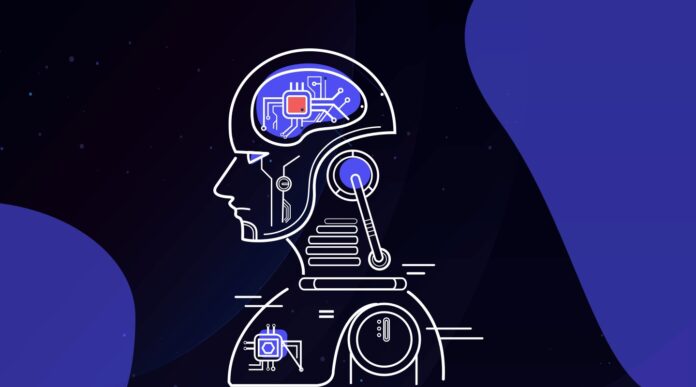Before you head over to learn the purpose of the Q-Learning algorithm, you should have some knowledge about reinforcement learning. Well, reinforcement learning exclusively branches from Machine Learning.
The system of both positive and negative reinforcements is specifically used to train machines. This is precisely what reinforcement learning is all about. It also enables us to come up with unique solutions. Q-learning is a kind of reinforcement learning that is model-free.
This article will discuss the purpose of Q-Learning and how to implement it. Let’s get started.
What is Reinforcement Learning?
Branching from Machine Learning, Reinforcement Learning typically aims to train a model. It further returns an optimum solution through a sequence of solutions exclusively created for a specific problem.
The model comes with innumerable solutions. And once the right signal is chosen, a reward signal is immediately generated. A positive reward is typically generated if the model works closer to the goal. But if the model is not performing according to the goal, a negative reward is returned.
What kinds of algorithms does reinforcement learning have?
Reinforcement Learning consists of two distinct kinds of algorithms. They are:
● Model-Free
This algorithm excludes the dynamics of the environment only to estimate the optimal policy.
● Model-Based
This algorithm includes the dynamics of the environment to estimate the optimal policy.
What is Q-Learning?
The model-free reinforcement learning algorithm is popularly known as Q-Learning. It tries to determine the next best action that can essentially randomly maximize the reward. As the algorithm updates the value function based on an equation, it is essentially made into a value-based learning algorithm.
The main objective of the model is to determine the best course of action given its current state. To do this, they might come up with rules of their own. Sometimes, they might even operate outside the policy given to them. As there is no actual need for an approach, it can be very well called an off-policy.
What are some important terms in Q-Learning?
Here, we have comprehensively listed some of the basic terms in Q-learning. Go through each of them to have a clear insight,
● Action
Action is a step taken by the agent when the model is in a particular state.
● States
S, the State, technically represents the current position of an agent within an environment.
● Episodes
Episodes are when an agent ends up in a distinctively terminating state and is incapable of taking new action.
● Rewards
The agent will be granted either a positive or negative reward for every action taken.
● Temporal Difference
It is a formula that is typically used to find the Q-value. It deliberately uses the value of the current and previous state and action.
● Q-Values
These are used to determine how good an Action (A) is taken at a particular State (S).
What is Bellman Equation?
Richard E. Bellman was popularly known as the father of Dynamic programming. And it was after him the Bellman Equation was named.
Dynamic programming typically simplifies immensely complex tasks by breaking them into minor problems. Further, these smaller problems are recursively resolved before finding ways to attack the more significant problem.
The Bellman Equation determines the value of a particular state. After that, it concludes how valuable it can be in that state. In other words, the Q-function uses the Bellman equation and two inputs: State (S) and Action (A).
But how do we know which action is appropriate to take if we are familiar with the expected rewards? Well, you always have the privilege to choose the sequence of actions that typically generates only the best rewards. Further, it can be easily represented as the Q value.
You can use this equation:
This equation consists of the current state, the discount factor, the learning rate, and the maximum expected reward. Also, it consists of the reward linked to a particular state. These are typically used to find the next stage of the agent.
What is Q-Table?
There are a plethora of paths and solutions that Q-learning provides. So to manage and determine the best solutions, a Q-table is used.
Q-table is nothing more than just a simple lookup table. This is exclusively created so that you can calculate and manage the maximum expected future rewards. Besides, you can easily identify the best action for every state within the environment.
By making the best use of the Bellman Equation at every state, you can get the expected rewards and future state. After that, you can save it in a Q-table and make comparisons to all the other states.
What is the process for Q-Learning?
There are quite a few steps involved with the process of Q-Learning. They include:
● Initializing the Q-Table
The first step toward Q-learning is to create the Q-table with “n” and “m.” Here “n” denotes the number of actions and “m” denotes the number of states.
● Choosing and performing an action
Initially, your Q-table should have all the 0’s as no action hasn’t been performed yet. Further, you must choose an action and update it within your Q-table in the correct section. This typically states that the action has been performed.
● Calculating the Q-Value using Bellman Equation
Next, you need to calculate the value of actual rewards and the Q-value for all the actions performed. All of these need to be done with the help of the Bellman Equation.
Lastly, you must keep repeating steps 2 and 3 until an episode ends or until the Q-table is filled.
Purpose of Q-Learning Algorithm
Using a Q-learning algorithm, we can seamlessly optimize the ad recommendation system. This can typically be used to recommend all products frequently bought together. And the reward will be granted only if the user clicks on the suggested product.
Thus, to conclude
In addition, Purdue University collaborated with IBM to offer AI and Machine Learning certification course. With this program, a student will be able to acquire a comprehensive understanding of Python, Deep Learning with Tensorflow, Natural Language Processing, Speech Recognition, Computer Vision, and Reinforcement Learning, as well as Natural Language Processing (NLP).
This model-free reinforcement learning algorithm enables you to learn the value of an action in a specific state. As it doesn’t demand a model of the environment, it is popularly known as model-free. Above all, Q-learning can seamlessly handle all problems with scholastic transitions and rewards without demanding adaptations.





